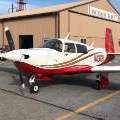Cruise Speed Loss By Weight
-
Members Online
- dc0341
- ericrynehess
- Brian2034
- Taz
- jamesm
- Bunti
- DonMuncy
- Marc_B
- Denis Mexted
- WheelPantsOff
- Jasper
- takair
- Alan Fox
- Matthew P
- Fly Boomer
- IvanP
- Skyland
- JohnnieMKE
- chrixxer
- Hank
- Parker_Woodruff
- eman1200
- Delta
- Fritz1
- Ragsf15e
- rbmaze
- Rick Junkin
- Thedude
- UteM20F
- rturbett
- varlajo
- McMooney
- ElkoRandy20J
- Scottknoll
- mikechaf
- Slick Nick
- R Van Dyck
- 201er
- hubcap
- Igor_U
- Mcstealth
- DXB
- MarquezJC
- Utah20Gflyer
- Jarerh
- Z W
- hazek


Recommended Posts